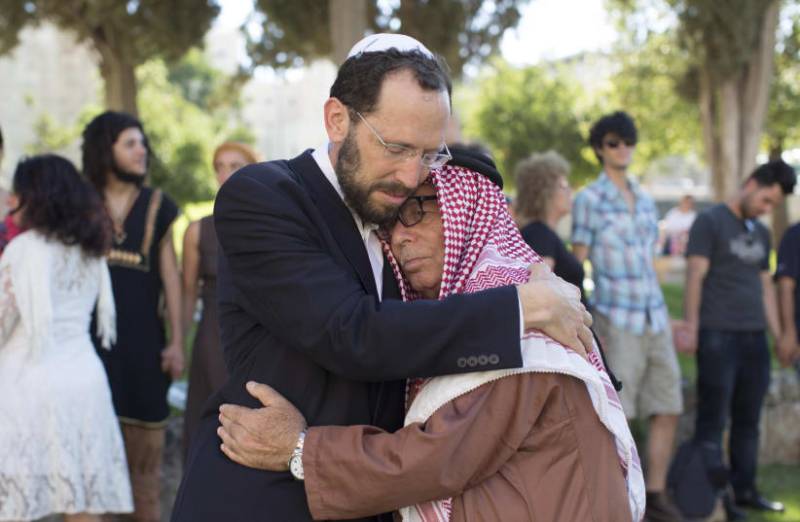
“In the social jungle of human existence, there is no feeling of being alive without a sense of identity”—Erik Erikson
Human beings like to be connected either mentally or physically to someone or to some institution. They generally take on the knowledge, mannerism, culture and lifestyle along with different dogma of the family and region where they are born. From an early age, their brains are tuned to accept and absorb whatever information is fed to them, whether it be in terms of relationships, religion, faith and even their future course of life. These things are important for children, as they come to this world with a clean slate, requiring guidance until the time they are able to think and fend for themselves. However, as they mature, they mostly find themselves between two extremes where some continue their lives based on the foundational teachings of their early childhood while some go onto negate in absolute terms whatever notions are injected in their minds.
Only a small percentage have a conscious understanding of their existence that may be the result of education, research or just living in alien lands. They may initially suffer from what psychologists term as an ‘identity crisis,’ which can be overcome by finding groups sharing similar ideas and then bonding with them. Those who are not so fortunate can be afflicted with mental disorder where they find themselves unable to gel with their surroundings and in certain cases can even be ostracized by their society, when their thoughts appear repugnant to the general social environment.
The confused lot are those who tend to lead a double life where they identify themselves with whomsoever they are interacting. They want to enjoy benefits of a certain way of thinking, yet retain their own individuality of thought. Their behavior can change with the group they find themselves with. For example, if they belong to an orthodox school, they adorn their style, but the moment they step into the liberal world, their attitude towards everything undergoes a polar change.
Now if we look at different regions, especially those which are cosmopolitan in nature, we can, to a great extent, identify various groups on the basis of their physical appearance but what if the residents are predominantly homogenous, then other than making reference to their locality, it would be difficult to separate them in terms of the faith they profess. Pertinent instances would be that of Kashmir, China, Thailand, Kenya, etc. where people have been living together for centuries but in the absence of an identity icon it is hard to distinguish which group they belong to.
The nature of dress is usually in relation to the climatic conditions of an area otherwise, one would not find uncontacted tribes roaming around in the jungles in the Congo or Amazon with miniscule clothing. The heat and humidity in these regions do not allow anything touching their skin that could cause irritation. However, as the colonial powers set their feet in these grounds, some of these natives were made to cover themselves as they offended the morals of the ‘cultured’ invaders. So, depending on where one is born clothing too takes its own form. Some go for colorful garments, while some have quite somber tastes which is all in sync with the indigenous traditions they observe and identify themselves with. The concept of uniform was introduced with this very idea of providing an easily recognizable identity.
Even in the world today, there is no difficulty in determining who belongs to which religious or ethnic school of thought. Thus, moulvis, rabbis, priests, sadhus, shamans, and their like are easily recognizable amid hordes of people. Besides clothes, their haircut, beards, rings on their fingers and other accompaniments, like rosaries, armlets etc. are reflective of their particular brand of belief thus attracting those who have similar partisan leanings. Within no time people gather around them in order to learn a few lessons from their ‘holiness’ which their own busy schedules prevent them from studying on their own, or just to gain blessings.
One thing is certain. Outfits or physical appearance may, like a flag be representative of particular regions or ideals but these definitely do not display humanity or compassion of a person. The most atrocious behavior has been observed in some people who identify themselves as highly religious regardless of their faith. In their eagerness to portray themselves as rightly guided, they hide their brutality behind the veil of specific costumes and accoutrements to appear like saints giving the impression of extreme sincerity with their belief system. In their arrogance, they judge those who may not conform to their idealism even though others may be far superior in humanism. Now this is a deception that is bound to fool the innocent and vulnerable. A number of criminal acts attributed to such hypocrites have been reported widely around the globe.
Another type of pretenders are those who carry the view of pleasing higher-ups and bosses by copying their mannerism. Pakistani society is a most suitable example of the way in which men changed their attire from western suits until late 1970s to adopting shalwar-qameez-sherwani as did the women too, after General Zia-ul-Haq usurped power through a coup d’état on July 5, 1977. From the boss to the peon, many succumbed to pleasing the tyrant by following in his footsteps to confirm their support for this makeover although the armed forces continued to retain their identity with the western uniform.
The long and short of this discourse is that it is about time humans shared their identity on the basis of compassion, humility and respect for each other. They say, birds of a feather flock together. If we are successful in connecting to those who have humane characteristics, regardless of their affiliations with a specific brand of religion or philosophic principles, our society can automatically emerge as a peaceful milieu, where coexistence is given preference over violence and hatred.

